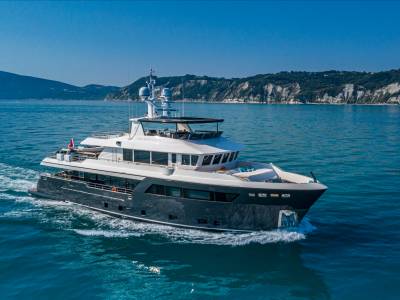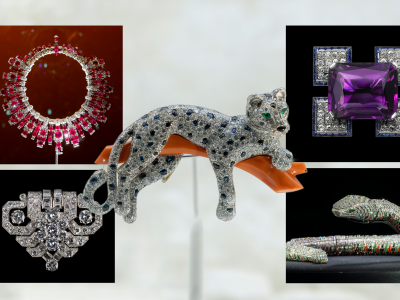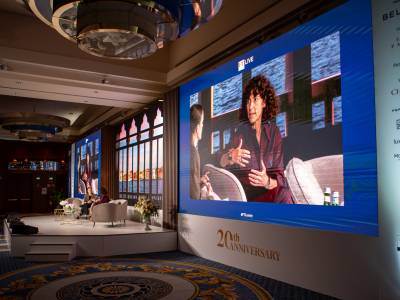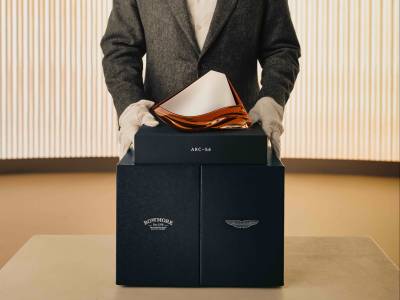When the boatbuilder Wider launched its first superyacht prototype a decade ago, it surprised the industry by making a big deal about one particular characteristic. The Wider 150 was, the Italian company said, the first superyacht to obtain a perfect score for levels of sound and vibration from the Royal Institute of Naval Architects, the global governing body of maritime engineering. Yes, it wasn’t how luxuriously well-appointed the yacht was that was highlighted, nor its speed or range, but how quiet it was. “Over the years since, it’s become a major challenge for superyacht builders to make their boats as soundless as possible,” says Wider’s Chief Technology Officer, Massimo De Luca. “As with the automotive industry, clients are increasingly used to the idea of electrical propulsion and the tranquillity it provides. The desire for quiet [maybe more so than sustainability] has become a real factor in whether to opt for that form of propulsion.”
Why Superyachts Are Shifting to Silent Sailing
8th April 2025
New-generation superyacht owners are prioritising soundless sailing over speed and luxury features as pioneering onboard electric motor technology gathers pace. Josh Sims dives into maritime travel’s silent yet exciting revolution.
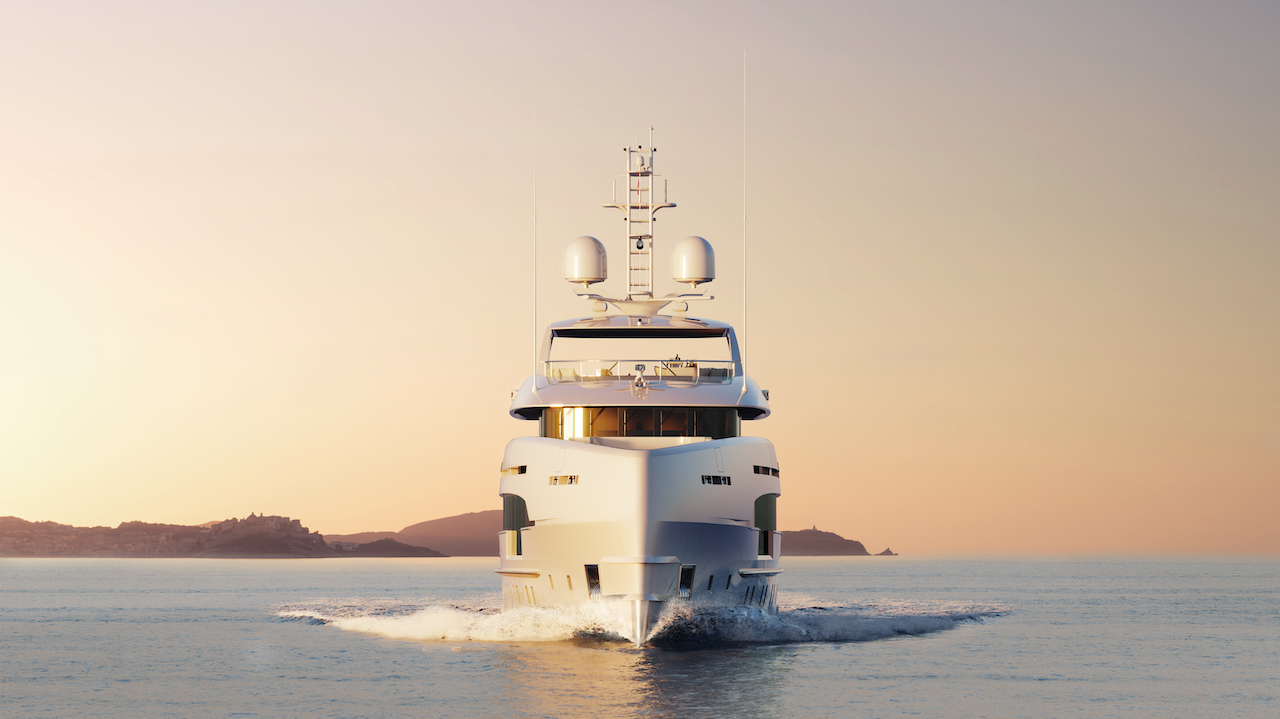
This is the flip side of the supercar world, De Luca proposes, in which electric motors have left automotive brands with a quandary: does silence take away much of their car’s personality, and should it be replaced with some artificial noise generation? Unless speed is your main selling point, with superyachts, quieter is better, he suggests, so Wider has experimented with such radical ideas as putting the power plant in the awkwardly narrow bow of its boats — as far away as possible from the stern where passengers spend the most time — and, later this year, looks set to become the first shipyard to launch its own solid-state battery technology. Superyacht electric motor technology to date has been borrowed from the car industry. Developing its own will allow it to massively increase the density of energy for the weight of battery. The result? Full hotel systems running for several hours at a time without the need to switch on generators — and so less noise. Indeed, the superyacht world is going to extraordinary lengths to keep the noise down.
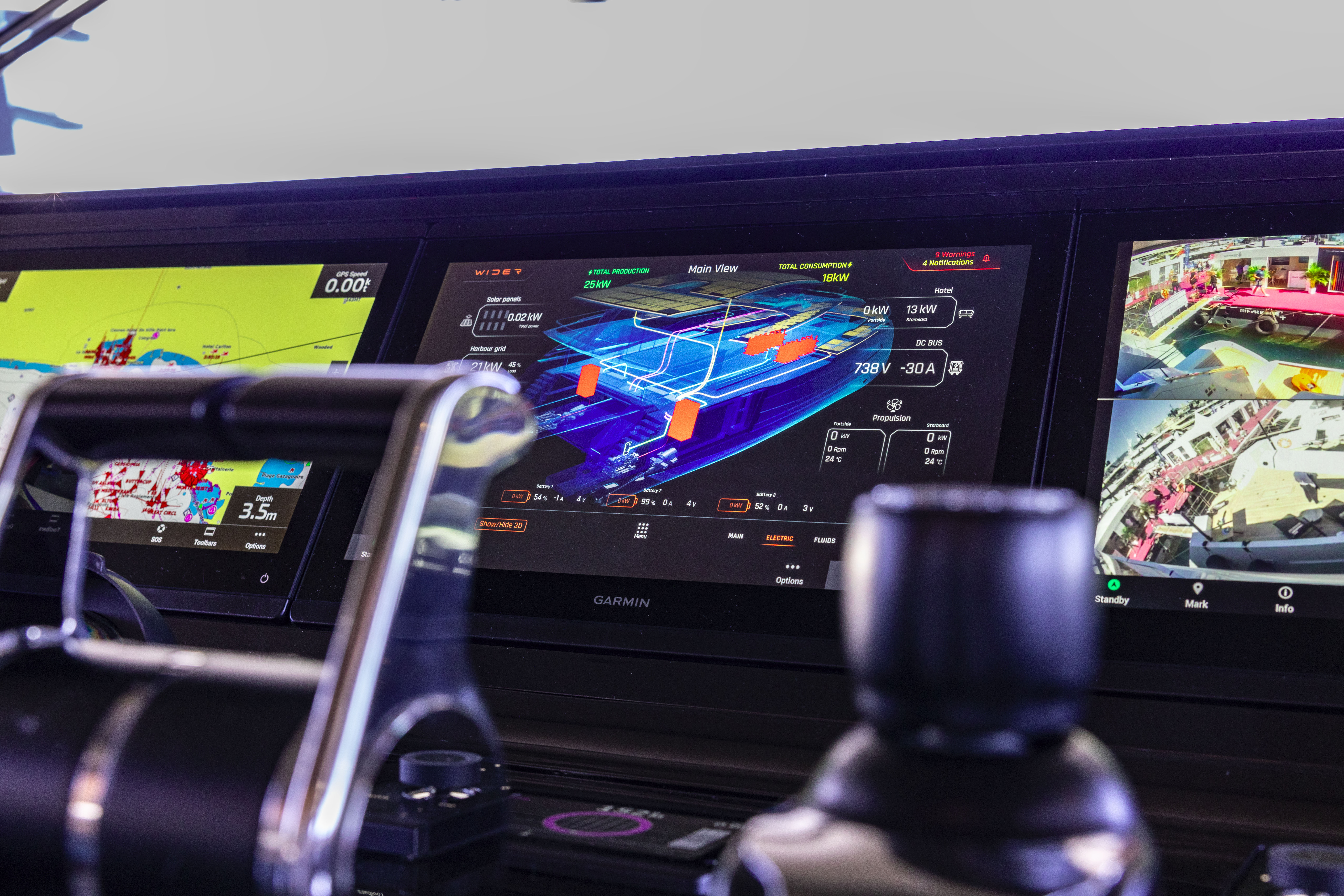
It’s long been standard for anything that vibrates to be mounted on sound-suppressing rubber supports, for example. This special rubber has the right balance of dampening and stiffening, so what it supports doesn’t dance around. Bigger yachts are increasingly built with a box-in-box system of a kind used for the more advanced auditoria around the world, in which the living quarters form part of an interior box ‘floating’ insulated — by way of an air gap and rubber dampeners — from the hull’s outer box. The space between the hull and the propeller, another major source of noise, has been extended. “We aim for around 35–45 decibels when not sailing [akin to the sound of a room fan at low speed] and 55–60 decibels when sailing [like soft rainfall], which is still quiet,” says Peter Van Der Zanden, General Manager of Design and Development at the Dutch boat-building company Heesen Yachts. As one of its promotional pitches has it: “In a world full of noise, silence is the ultimate luxury.” Though be careful of what you wish for, Van Der Zanden stresses: “There’s actually a point where it can all be too quiet, and then you start to hear absolutely everything. You’re suddenly aware of all the background noise.”
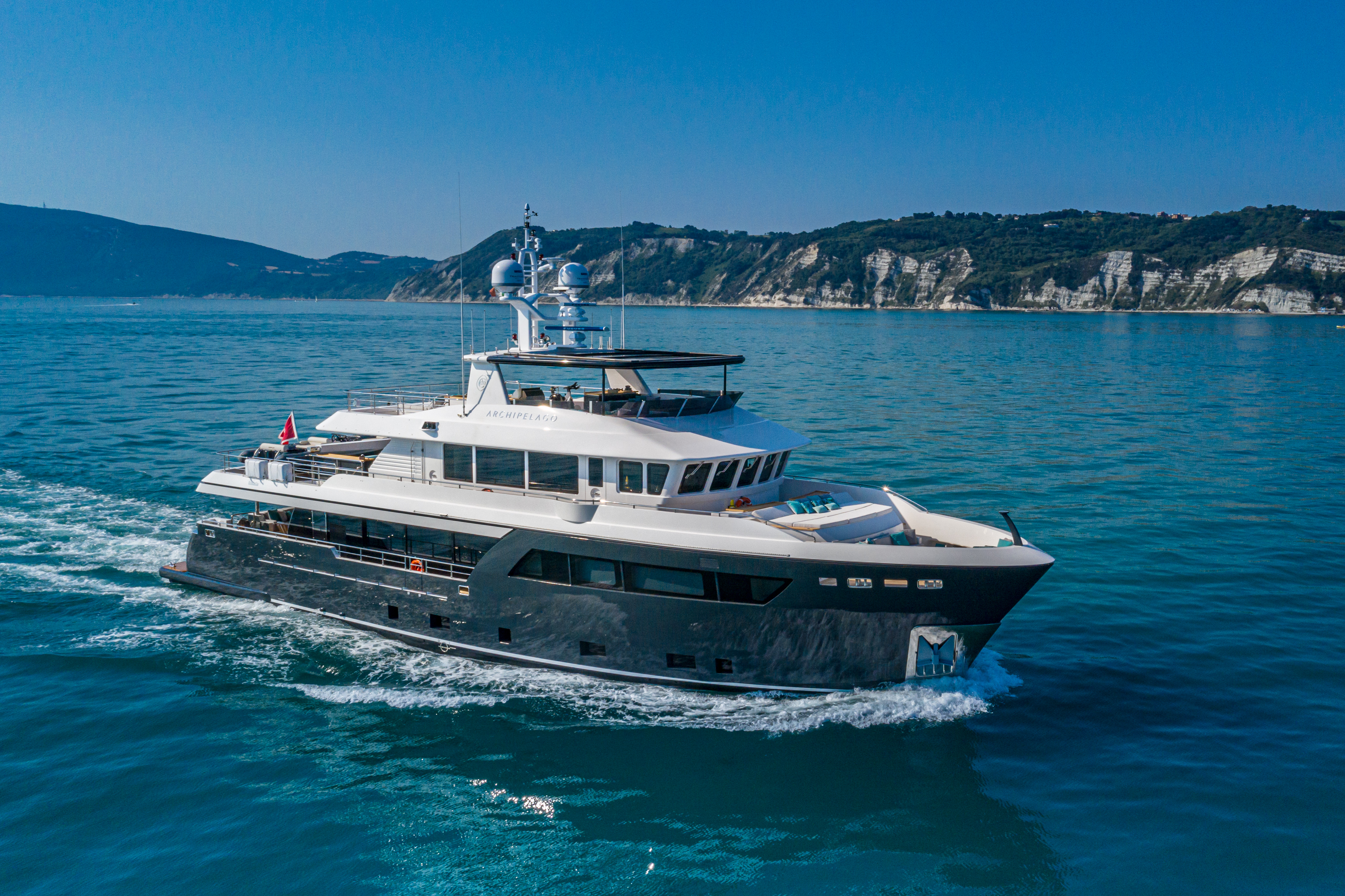
Certainly, Heesen has been notably pioneering in the development of major boat technologies that, while their primary purpose may not be sound reduction, have that added benefit too. Hull vane technology, for example, is an underwater wing that improves a yacht’s stability in rough waters but also means that less power is needed to propel it, allowing for the installation of smaller, quieter main engines. In addition, its streamlined fast displacement hull form increases the ease with which a yacht can move through water with minimal vertical movement, which gives better fuel economy and, since there’s reduced resistance and enhanced hydrodynamic performance, it’s also generally quieter than other types of hull. Feadship, another well-known Dutch boatbuilder, has made efforts to stiffen the structures of its vessels, such as its new Concept C, to greatly reduce vibration.

But much smaller systems also matter. Heesen’s Van Der Zanden says that bow thrusters, propulsion devices built into the front of a boat to help with manoeuvring, tend to be especially noisy, owing to the action of their small, fast-moving propellers on the surrounding water. Consequently, there’s increased experimentation to make a concept first introduced in 2005 suitable for ever larger craft — the shaft-less, electrically powered bow thruster, which makes use of magnetic rings with composite blades for much quieter action. Meanwhile, Centek Marine, a US-based specialist maker of ventilation and exhaust systems for superyachts, has developed an apparatus that separates waste gas and water. Why so? Because typically these are ejected and splash into the sea. Centek’s innovative system allows the water component to empty silently below the boat’s waterline. “Reducing noise is about that level of detail now. We’re constantly trying to find ways of moving air [around a boat] with less noise, such as trying different pitches for the blades,” explains Tom Hodges, Director of Centek. The company is also driving the latest iterations of wet exhaust systems — introduced in the 1970s and making use of seawater to cool the heat exchanger and other parts, but also because that water helps muffle the sound — so they’re useable on larger, 70m-plus boats that have long been limited to dry systems. Hodges laments that, for many boat builders, “sound attenuation”, as the experts like to call it, still takes a back seat, but attitudes are changing.
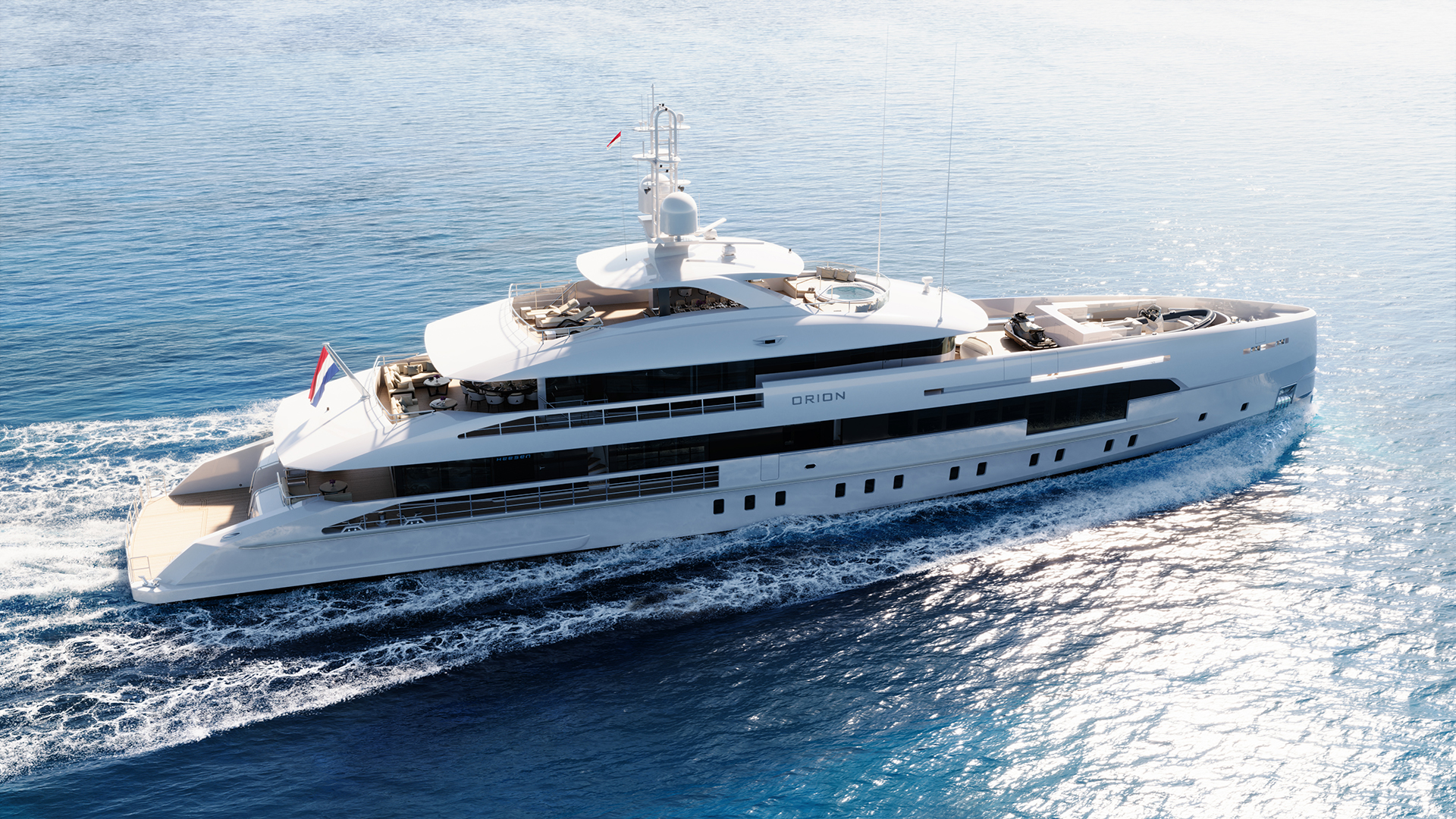
As notes Maria Roberto Morso, spokesperson for Italian boatbuilder Cantiere delle Marche, while it’s a strange enough idea to those outside of the superyacht world that “during sea trials you’ll see technicians with decibel counters wandering everywhere from engine room to sundeck”, this is all part of meeting the expectation of a younger breed of superyacht owner. That’s one reason why, over the last few years, the company has introduced the likes of a rubber sealing system around its heavyweight doors, which entirely contain sound to within (or without) that cabin. “We have several owners who were former sailors, and they don’t mind a noisier vessel,” Morso says. “But for a new generation of owners, who may perhaps spend longer on board, the quiet is part of the luxury experience that noise can detract from.” This is the superyacht as a floating home or hotel. And, of course, adds Tom Hodges, this isn’t just about the owner’s comfort either.
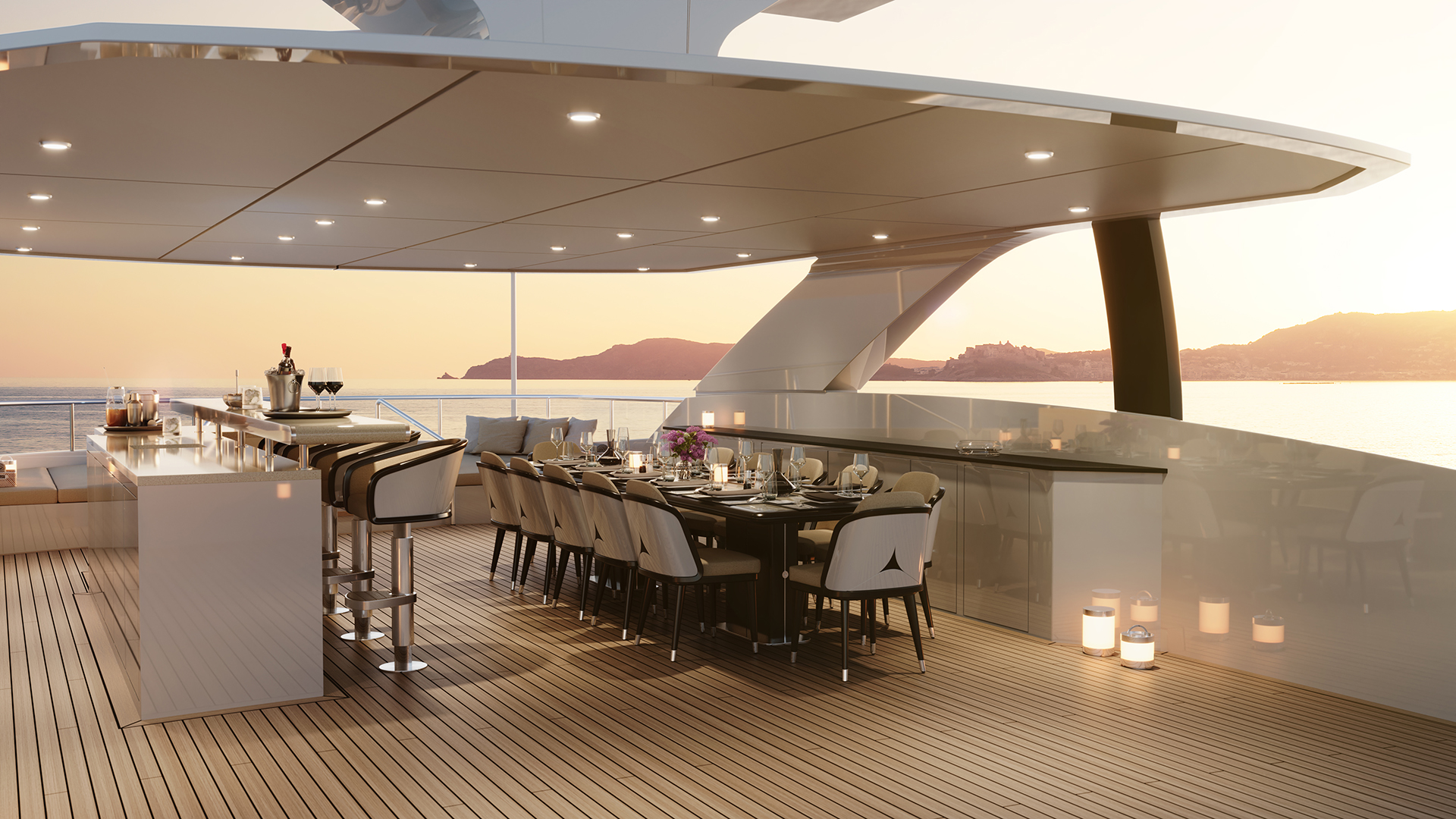
“Keeping the noise down on a superyacht is just as important for the crew, whose quarters tend to be nearest the engine, with the engineer right next to it,” he points out. While there are no regulations about decibel levels at sea, it might even be about the comfort of marine life, too. Sound travels further and four times faster in water than in air, and multiple studies suggest that the noise from boats can negatively affect the behaviour and physiology of marine mammals in particular, leading some major shipping lines to reconfigure the propeller action on their vessels to make them quieter. “[Potential superyacht] owners want to express their interest in environmental matters too and have an increasing interest in sound levels, so consequently, now there’s always an exploration of new materials and technologies for their sound-dampening qualities,” says Van Der Zanden. He cites Heesen’s latest boat, which goes by the working name of Project Orion, that has a fast-displacement hull form and uses a hybrid propulsion system which, he suggests, produces “noise levels hardly any higher at top speed than at anchor”. It even has a “silent cruising” mode. Heesen’s other new boat, Agnetha, is perhaps a little less well-placed to make claims to quiet. It is named after pop sensation ABBA’s warbling songstress.
